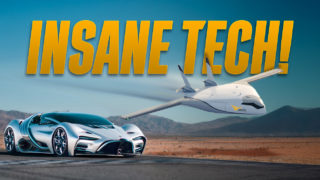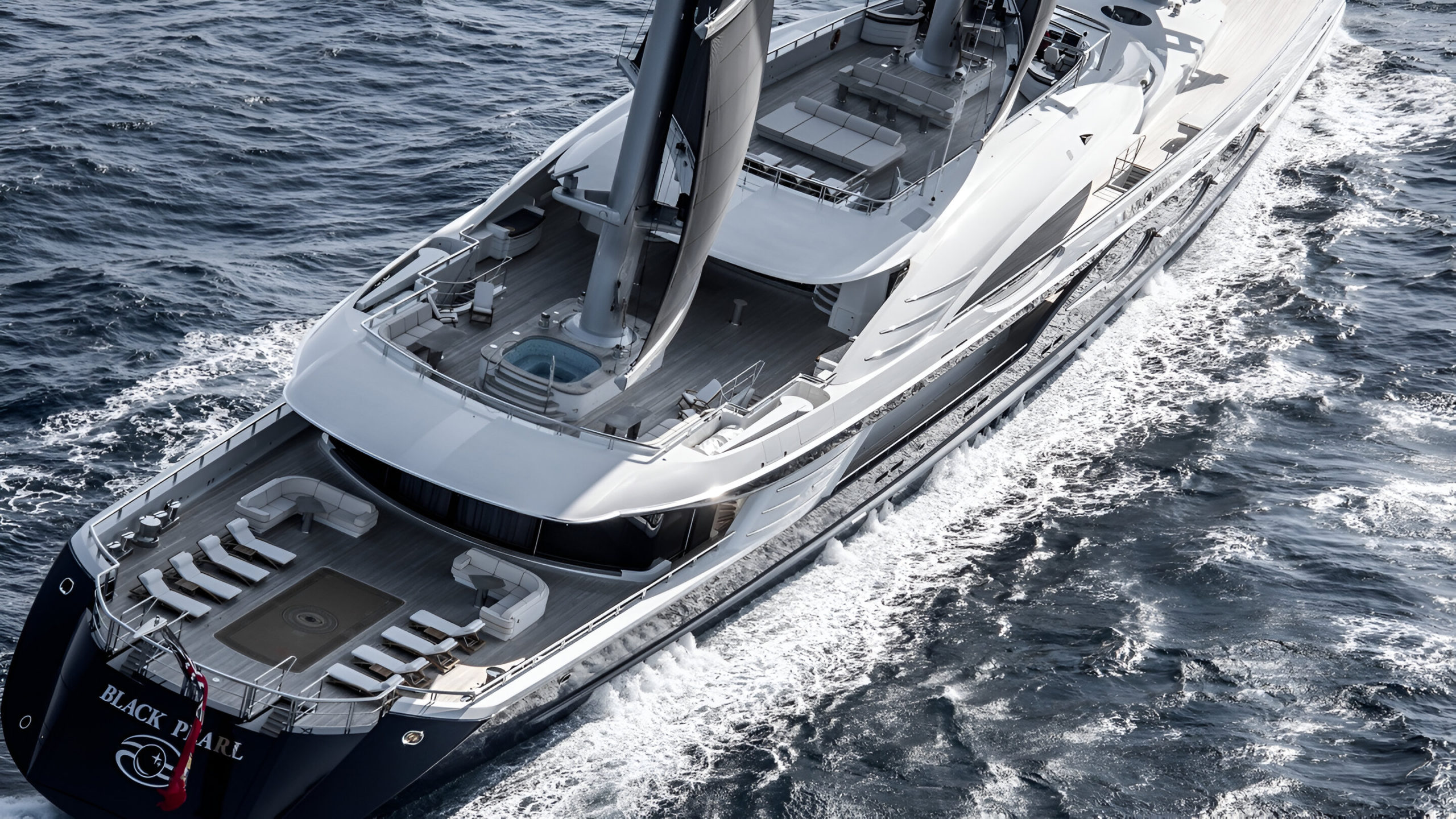Have you ever wondered what Captain Kirk drives when he’s not commanding the Enterprise? William Shatner’s car collection tells a story more fascinating than science fiction. From a humble $400 Morris Minor to a Ferrari Enzo supercar, his wheels reveal the man behind the uniform. His choices blend practicality, luxury, and raw power in surprising ways. Each vehicle marks a chapter in his journey from struggling actor to cultural icon.
10. Morris Minor: Humble Beginnings
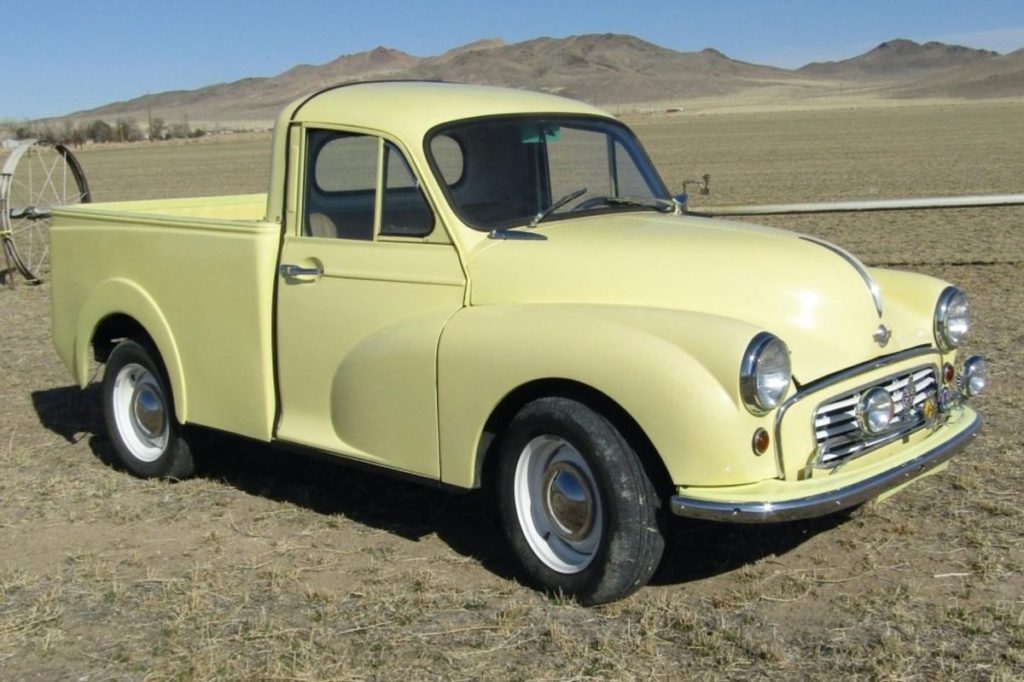
William Shatner’s automotive journey began with this modest British classic purchased for just $400. Compact dimensions and innovative monocoque construction made the Morris an ideal first car during his early career struggles.
Despite its small 948cc inline-four engine producing a mere 37 horsepower with a top speed of 62 mph, the Minor delivered essential reliability when Shatner needed transportation to Toronto where his legendary acting career took root. Behind its unassuming body style lies remarkable heritage – a design by Alec Issigonis, the same engineering mind who later created the iconic Mini.
Morris Minor (Interior)

Simplicity defines the cabin where Shatner experienced motoring essentials without luxury pretensions. Basic instrumentation with clear, no-nonsense gauges monitor vital functions from a straightforward dashboard. Hard-wearing upholstery and minimal passenger amenities reflect British post-war pragmatism, while clever packaging maximizes utility within the compact footprint.
From humble beginnings, these classics have appreciated considerably – well-maintained examples now command $10,000-$25,000 in today’s collector market. As the foundation stone of his later impressive collection, the Morris taught Shatner that automotive passion often begins with character-building vehicles rather than flashy status symbols.
9. 1963 Corvette Stingray Coupe: A Spaceman’s Ride

American muscle meets space-age styling in this pivotal Corvette that captured Shatner’s imagination. Revolutionary fiberglass bodywork introduced the now-legendary split rear window – a polarizing one-year-only design feature highly prized by today’s collectors. Under the hood, Chevrolet’s robust 327 cubic inch (5.4L) V8 delivers up to 360 horsepower – impressive muscle for its era.
Shatner opted for the four-speed manual transmission to maximize driver engagement with this potent powertrain. Chevrolet’s engineering breakthrough continued underneath, where the first-generation Sting Ray introduced independent rear suspension, dramatically improving handling dynamics. Six decades later, pristine examples command $100,000-$150,000 at auction.
1963 Corvette Stingray Coupe (Interior)

Driver-focused ergonomics place every control within easy reach inside Shatner’s Corvette. Aircraft-style gauges and twin bucket seats emphasize sporting intentions in the cockpit-inspired layout. Perhaps most fascinating is Shatner’s personal modification – small rear seats added for his daughters, transforming this sports car into a family memory-maker without sacrificing its essential character.
This customization reveals how Shatner adapts vehicles to fit his life rather than conforming to their limitations. Despite the C2 Corvette’s notoriously tight cabin – a common criticism from period reviewers – Shatner created a practical sports car that maintained its thrilling performance credentials.
8. 2011 Porsche Panamera: Performance Meets Luxury (Exterior)
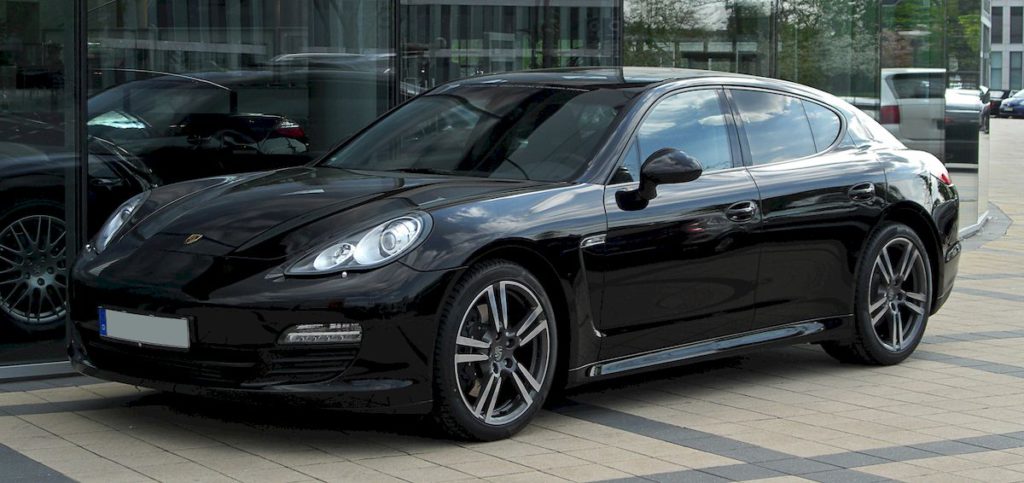
The 2011 Porsche Panamera in Shatner’s collection defies conventional choices. While most enthusiasts gravitate toward the 911, Shatner embraced Porsche’s controversial four-door. Its sleek silhouette houses a responsive 300-horsepower V6 engine mated to a seven-speed PDK transmission that delivers lightning-quick shifts.
The Panamera’s aluminum-intensive body construction helps maintain Porsche’s handling standards despite its larger footprint. Long, flowing lines distinguish it from typical luxury sedans, with the unmistakable Porsche DNA visible in its headlight design and wide rear haunches.
2011 Porsche Panamera (Interior)

Inside Shatner’s Panamera, premium materials meet Porsche’s driver-centric philosophy. The cockpit features a distinctive central console that rises toward the dash, housing essential controls within fingertip reach. Four individual seats provide long-distance comfort without sacrificing sporty support during spirited driving.
Advanced infotainment systems deliver connectivity and entertainment options befitting a luxury grand tourer. The Panamera’s spacious cabin maintains sporting character through details like the three-gauge instrument cluster – a nod to Porsche heritage in a thoroughly modern package.
7. 2002 Aston Martin DB7: Elegance and Power (Exterior)

British elegance combines with supercar performance in this Ian Callum-designed masterpiece from Shatner’s garage. Timeless proportions showcase classic long-hood, short-deck styling with subtle curves that catch light beautifully in any setting. Beneath the sculpted hood lurks a 5.9L V12 engine producing 420 horsepower, launching the DB7 from 0-60 mph in just 4.9 seconds toward a top speed of 185 mph.
Daily driven by Shatner until 2016, this exotic proved its real-world usability despite its high-performance credentials. Market dynamics have made these machines surprisingly accessible – once priced around $140,000 new, good examples now range from $30,000-$50,000, offering remarkable prestige per dollar.
2002 Aston Martin DB7 (Interior)

Handcrafted luxury greets occupants of Shatner’s DB7, elevating driving to a genuine sensory experience. Premium leather covers nearly every surface, complemented by real wood and brushed metal accents providing visual warmth and tactile satisfaction. Long-distance comfort coexists with lateral support during spirited driving thanks to thoughtfully designed seats.
Hand-stitched panels and precisely machined controls offer exquisite detailing that feels substantial with every interaction. While the infotainment system now appears dated by contemporary standards, it serves as a reminder that true luxury transcends temporary technology trends. Craftsmanship that engages all senses defines the essential Aston Martin interior experience.
6. 2004 Volkswagen Phaeton: A Glimpse into the Future (Exterior)
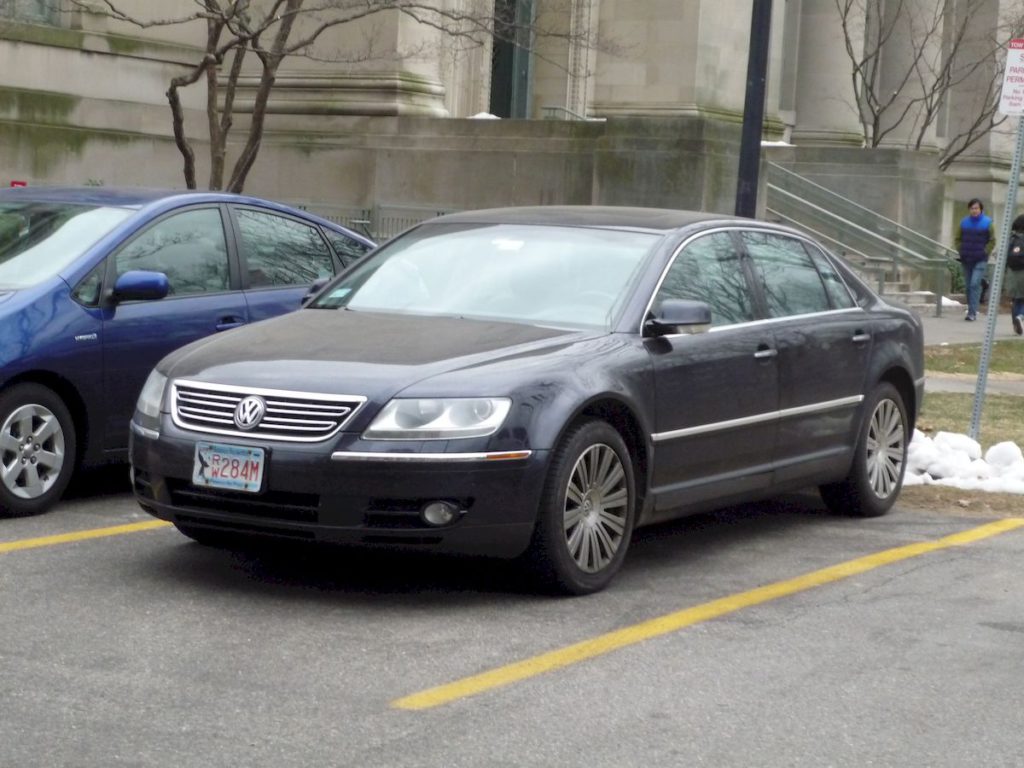
German engineering ambition takes physical form in Shatner’s Volkswagen Phaeton. Substantial presence and clean, understated lines defy VW’s typically accessible image in this full-size luxury sedan. Conservative styling masks the technological powerhouse underneath – a 4.2L V8 engine producing 335 horsepower with standard all-wheel drive providing year-round capability.
Originally selling for between $64,600-$94,600, these engineering marvels now represent extraordinary value at just $5,000-$20,000 on the secondary market. Advanced air suspension delivers exceptional ride quality regardless of road conditions. Despite critical acclaim from automotive journalists, the marketplace proved hesitant about a Volkswagen badge on a luxury vehicle competing with established premium marques.
2004 Volkswagen Phaeton (Interior)

Draft-free climate control maintains precise temperatures without perceptible airflow inside Shatner’s Phaeton. Premium materials and impeccable build quality rival flagship luxury models from established prestige marques. Special acoustic glass and extensive insulation create exceptional sound isolation, delivering a serene environment even at highway speeds.
Each occupant can select their ideal temperature independently thanks to four-zone climate control – a feature typically reserved for ultra-luxury vehicles. High maintenance costs and poor fuel economy became notable drawbacks for owners despite the interior excellence. Engineering beyond conventional expectations defines the Phaeton’s cabin – luxury that outperforms its badge rather than relying on brand cachet.
5. Citroen 2CV: The Ugly Duckling (Exterior)

Automotive eccentricity at its finest appears in the Citroen 2CV from Shatner’s diverse collection. Unique, unconventional cars have always held a special place in automotive history, from quirky Citroëns to some of GM’s weirdest muscle cars you’ve probably never heard of. Distinctive corrugated bodywork and minimalist approach to motoring make this French icon instantly recognizable worldwide. Carrying farmers and their eggs across plowed fields without breaking either was the original design brief, resulting in unconventional suspension allowing extreme articulation over rough terrain.
Modest propulsion comes from the air-cooled 2-cylinder engine producing just 9 horsepower yet delivering remarkable dependability in all conditions. Open-air experience becomes possible through the iconic roll-back canvas roof – simple yet effective design. Shatner’s appreciation for automotive character beyond raw specifications becomes evident through this humble yet charismatic vehicle’s inclusion in his collection.
Citroen 2CV (Interior)

Ingenious simplicity defines every element inside Shatner’s 2CV. Hammock-style seats suspend passengers in surprising comfort despite minimal padding – demonstrating how clever engineering solves problems without complexity. Distinctive mechanical precision comes from the umbrella-handle shifter operating through an unusual shift pattern unlike any other production car.
Essential instruments and nothing more comprise the dashboard controls, embodying functional minimalism decades before it became fashionable in modern design. Remarkable space efficiency within compact exterior dimensions results from clever interior packaging. Automotive charm emerging from honest utility rather than luxury pretensions demonstrates how distinctive personality transcends conventional automotive hierarchies in Shatner’s eclectic collection.
4. 1967 Jaguar XK: Classic British Style (Exterior)

British GT design reaches its pinnacle in the 1967 Jaguar XK from Shatner’s garage. Flowing lines and perfect proportions establish visual standards that continue influencing sports car design today. Long hood houses the legendary inline-six engine producing 265 horsepower – impressive output for its era. Responsive throttle feel with distinctive intake sound comes courtesy of triple SU carburetors feeding this sophisticated powerplant.
Agile handling and 140 mph top speed result from lightweight construction techniques advanced for the period. Iconic covered headlights housed in the front fenders have become a Jaguar design signature recognized globally. Purposeful design creating automotive beauty without superfluous elements defines this British sporting masterpiece.
1967 Jaguar XK: Classic British Style (Interior)
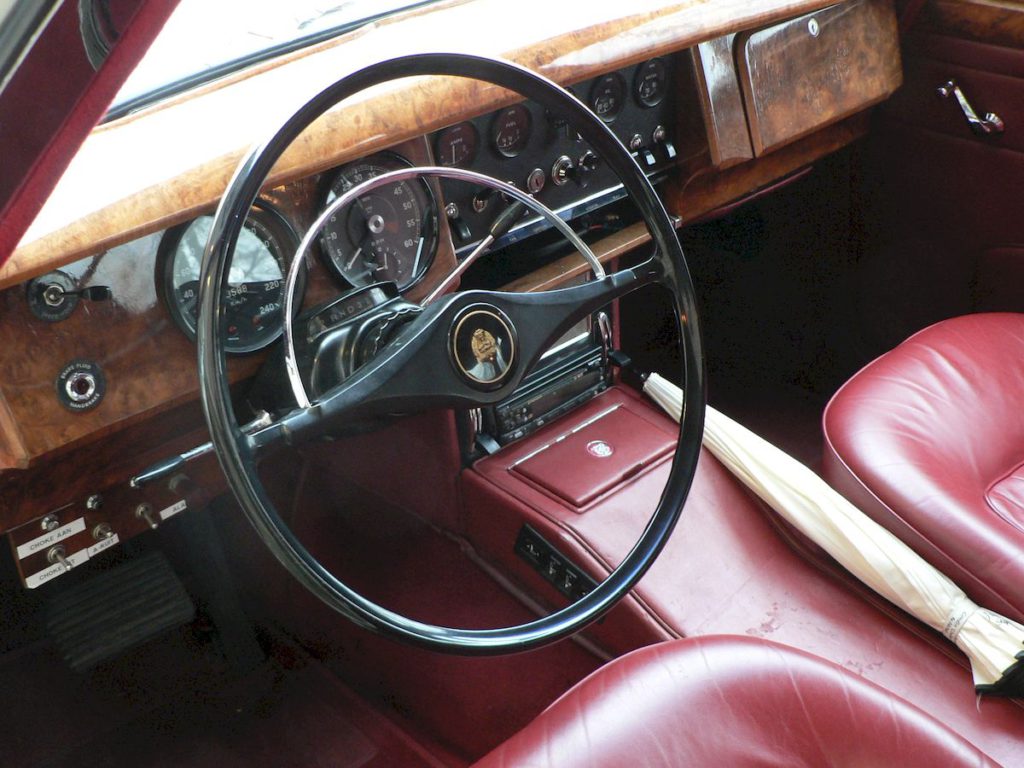
Driver-focused cabin balancing sporting character with luxury welcomes occupants of Shatner’s XK. Rich wood dashboard houses classic Smiths instruments featuring characteristic cream faces and precise markings for essential information. Satisfying mechanical action comes from beautifully crafted toggle switches controlling essential functions throughout the cabin.
Natural wear on leather seating surfaces develops a patina over decades, telling the story of enjoyment through authentic materials aging gracefully. Detailed road feedback combines with stunning aesthetics in the large wood-rimmed steering wheel – form and function in perfect harmony. Golden age of British craftsmanship appears throughout this interior where materials were chosen for authenticity rather than cost savings, creating a timeless driving environment.
3. 2016 Jaguar F-Type R Convertible: Modern Elegance (Exterior)

The 2016 Jaguar F-Type R Convertible in Shatner’s collection showcases modern British performance. Finished in striking polar white with black and red accents, this roadster turns heads even when parked. Its supercharged 5.0-liter V8 delivers an astonishing 543 horsepower to the rear wheels.
The active exhaust system produces a soundtrack ranging from sophisticated purr to ferocious roar. Deployable rear spoiler activates at speed to enhance stability approaching the F-Type’s 186 mph top speed. Shatner’s personal touch includes his autograph on the driver’s side sun visor – adding celebrity provenance to this already special machine.
2016 Jaguar F-Type R Convertible (Interior)

Driver-focused controls wrap around occupants like a cockpit in Shatner’s F-Type. Theatrical flourish comes from the joystick-style shifter that rises dramatically from the center console during engine start-up – a fitting touch for an actor’s car. Perfect support during hard cornering combines with long-distance comfort in the performance seats.
Exceptional audio quality flows from the 12-speaker Meridian sound system, though many owners prefer listening to the supercharged V8’s natural soundtrack instead. Premium materials with contrast stitching create a luxurious environment without sacrificing sporting intent. Modern Jaguar design philosophy successfully blends contemporary technology with the brand’s traditional craftsmanship values throughout this carefully executed interior.
2. 2006 Dodge Viper: American Muscle (Exterior)

Raw American performance takes physical form in the 2006 Dodge Viper from Shatner’s collection. Aggressive silhouette features distinctive design elements including deep side exhausts and the signature double-bubble roof. Massive hood houses an 8.3-liter V10 engine developing immense power delivered through a purpose-built six-speed manual transmission engineered specifically for this application.
Supercar territory performance results in 0-60 mph acceleration under 4 seconds – extraordinary capability for its era. Enormous tires mounted on the wide stance provide necessary grip to harness the tremendous power. Unapologetic performance with visual drama to match capabilities defines this Viper – American muscle in its most concentrated form rather than European sophistication.
2006 Dodge Viper (Interior)

Single-minded focus on the driving experience defines the cockpit of Shatner’s Viper. Short-throw shifter falls naturally to hand, connected directly to the transmission without electronic interference for maximum mechanical engagement. Heel-toe downshift capability comes from pedals positioned specifically for this advanced driving technique, demonstrating the Viper’s track-focused intentions.
Essential information appears in large, clear gauges monitoring the powerful V10’s vital signs. Aggressive cornering support combines with surprising long-journey comfort in the supportive seats. American performance philosophy prioritizes driving dynamics rather than luxury amenities or excessive technology throughout this purpose-built interior, directing resources toward the elements that enhance driver connection with this extraordinary machine.
1. 2002 Ferrari Enzo: The Ultimate Supercar (Exterior)

Pinnacle achievements in automotive engineering culminate in the 2002 Ferrari Enzo – crown jewel of Shatner’s impressive collection. Formula 1 technology transfers directly to the street through carbon fiber construction and active aerodynamics working in harmony. Naturally-aspirated V12 engine produces 660 horsepower without resorting to turbocharging – maintaining Ferrari’s purist philosophy. Theatrical display occurs each time the distinctive doors open upward and forward, revealing the carbon fiber cockpit within.
Downforce without sacrificing breathtaking aesthetics results from F1-inspired design elements throughout the bodywork. Extraordinary performance matches the visual drama with 0-60 mph acceleration in just 3 seconds and top speed approaching 270 mph – numbers that remain impressive even by today’s hypercar standards.
2002 Ferrari Enzo (Interior)

Minimalist cockpit dominated by carbon fiber surrounds the driver in Shatner’s Enzo. Formula 1 influence continues in the steering wheel incorporating LED shift lights and essential controls positioned for immediate access during high-performance driving. Perfect support during high-G cornering comes from manually adjustable carbon-fiber seats that save weight while prioritizing function. Racing heritage appears throughout the cabin through exposed carbon fiber components – no attempts to hide the structural elements.
Performance focus continues through the deliberate absence of carpet and sound insulation, demonstrating Ferrari’s commitment to reducing weight rather than adding luxury. Ultimate expression of automotive purpose defines this interior – every element exists to enhance the driving experience without unnecessary distraction from the extraordinary machine’s capabilities.






